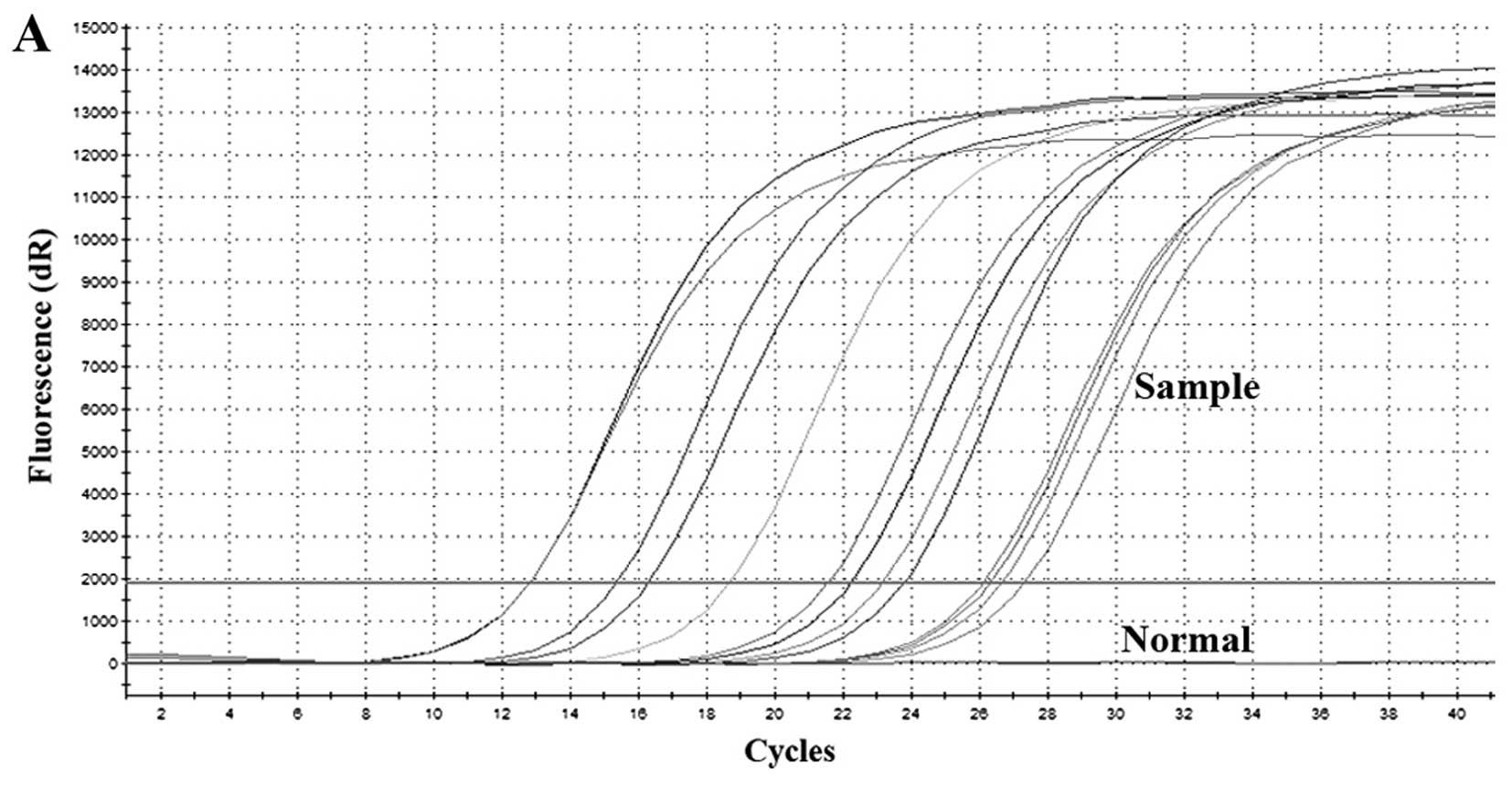|
1
|
Schmaljohn CS, Hasty SE, Harrison SA and
Dalrymple JM: Characterization of Hantaan virions, the prototype
virus of hemorrhagic fever with renal syndrome. J Infect Dis.
148:1005–1012. 1983. View Article : Google Scholar : PubMed/NCBI
|
|
2
|
Jonsson CB, Figueiredo LT and Vapalahti O:
A global perspective on hantavirus ecology, epidemiology, and
disease. Clin Microbiol Rev. 23:412–441. 2010. View Article : Google Scholar : PubMed/NCBI
|
|
3
|
Vaheri A, Henttonen H, Voutilainen L,
Mustonen J, Sironen T and Vapalahti O: Hantavirus infections in
Europe and their impact on public health. Rev Med Virol. 23:35–49.
2013. View
Article : Google Scholar
|
|
4
|
Roda Gracia J, Schumann B and Seidler A:
Climate variability and the occurrence of human puumala hantavirus
infections in Europe: a systematic review. Zoonoses Public Health.
62:465–478. 2015. View Article : Google Scholar : PubMed/NCBI
|
|
5
|
Maes P, Clement J, Gavrilovskaya I and Van
Ranst M: Hantaviruses: Immunology, treatment, and prevention. Viral
Immunol. 17:481–497. 2004. View Article : Google Scholar
|
|
6
|
Kanerva M, Mustonen J and Vaheri A:
Pathogenesis of puumala and other hantavirus infections. Rev Med
Virol. 8:67–86. 1998. View Article : Google Scholar
|
|
7
|
Khaiboullina SF, Morzunov SP and St Jeor
SC : Hantaviruses: molecular biology, evolution and pathogenesis.
Curr Mol Med. 5:773–790. 2005. View Article : Google Scholar : PubMed/NCBI
|
|
8
|
Clement J, Heyman P, McKenna P, Colson P
and Avsic-Zupanc T: The hantaviruses of Europe: from the bedside to
the bench. Emerg Infect Dis. 3:205–211. 1997. View Article : Google Scholar : PubMed/NCBI
|
|
9
|
Hedman K, Vaheri A and
Brummer-Korvenkontio M: Rapid diagnosis of hantavirus disease with
an IgG-avidity assay. Lancet. 338:1353–1356. 1991. View Article : Google Scholar : PubMed/NCBI
|
|
10
|
Mohamed N, Nilsson E, Johansson P,
Klingström J, Evander M, Ahlm C and Bucht G: Development and
evaluation of a broad reacting SYBR-green based quantitative
real-time PCR for the detection of different hantaviruses. J Clin
Virol. 56:280–285. 2013. View Article : Google Scholar : PubMed/NCBI
|
|
11
|
Garin D, Peyrefitte C, Crance JM, Le Faou
A, Jouan A and Bouloy M: Highly sensitive Taqman PCR detection of
Puumala hantavirus. Microbes Infect. 3:739–745. 2001. View Article : Google Scholar : PubMed/NCBI
|
|
12
|
Dash PK, Boutonnier A, Prina E, Sharma S
and Reiter P: Development of a SYBR-Green I based RT-PCR assay for
yellow fever virus: application in assessment of YFV infection in
Aedes aegypti. Virol J. 9:272012. View Article : Google Scholar
|
|
13
|
Jiang W, Yu HT, Zhao K, Zhang Y, Du H,
Wang PZ and Bai XF: Quantification of Hantaan virus with a
SYBR-Green I-based one-step qRT-PCR assay. PLoS One. 8:e815252013.
View Article : Google Scholar
|
|
14
|
Yi J, Xu Z, Zhuang R, Wang J, Zhang Y, Ma
Y, Liu B, Zhang Y, Zhang C, Yan G, et al: Hantaan virus RNA load in
patients having hemorrhagic fever with renal syndrome: correlation
with disease severity. J Infect Dis. 207:1457–1461. 2013.
View Article : Google Scholar
|
|
15
|
Wei F, Li JL, Ling JX, Chen LJ, Li N, Liu
YY, Luo F, Xiong HR, Hou W and Yang ZQ: Establishment of
SYBR-Green-based qPCR assay for rapid evaluation and quantification
for anti-Hantaan virus compounds in vitro and in suckling mice.
Virus Genes. 46:54–62. 2013. View Article : Google Scholar
|
|
16
|
Schmaljohn C and Hjelle B: Hantaviruses: a
global disease problem. Emerg Infect Dis. 3:95–104. 1997.
View Article : Google Scholar : PubMed/NCBI
|
|
17
|
Bird BH, Bawiec DA, Ksiazek TG, Shoemaker
TR and Nichol ST: Highly sensitive and broadly reactive
quantitative reverse transcription-PCR assay for high-throughput
detection of Rift Valley fever virus. J Clin Microbiol.
45:3506–3513. 2007. View Article : Google Scholar : PubMed/NCBI
|
|
18
|
Sall AA, Macondo EA, Sène OK, Diagne M,
Sylla R, Mondo M, Girault L, Marrama L, Spiegel A, Diallo M, et al:
Use of reverse transcriptase PCR in early diagnosis of Rift Valley
fever. Clin Diagn Lab Immunol. 9:713–715. 2002.PubMed/NCBI
|
|
19
|
Drosten C, Göttig S, Schilling S, Asper M,
Panning M, Schmitz H and Günther S: Rapid detection and
quantification of RNA of Ebola and Marburg viruses, Lassa virus,
Crimean-Congo hemorrhagic fever virus, Rift Valley fever virus,
dengue virus, and yellow fever virus by real-time reverse
transcription-PCR. J Clin Microbiol. 40:2323–2330. 2002. View Article : Google Scholar : PubMed/NCBI
|
|
20
|
Jiang W, Wang PZ, Yu HT, Zhang Y, Zhao K,
Du H and Bai XF: Development of a SYBR-Green I based one-step
real-time PCR assay for the detection of Hantaan virus. J Virol
Methods. 196:145–151. 2014. View Article : Google Scholar
|
|
21
|
Chen H, Parimelalagan M, Lai YL, Lee KS,
Koay ES, Hapuarachchi HC, Ng LC, Ho PS and Chu JJ: Development and
evaluation of a SYBR-Green-based real-time multiplex RT-PCR assay
for simultaneous detection and serotyping of dengue and Chikungunya
viruses. J Mol Diagn. 17:722–728. 2015. View Article : Google Scholar : PubMed/NCBI
|














